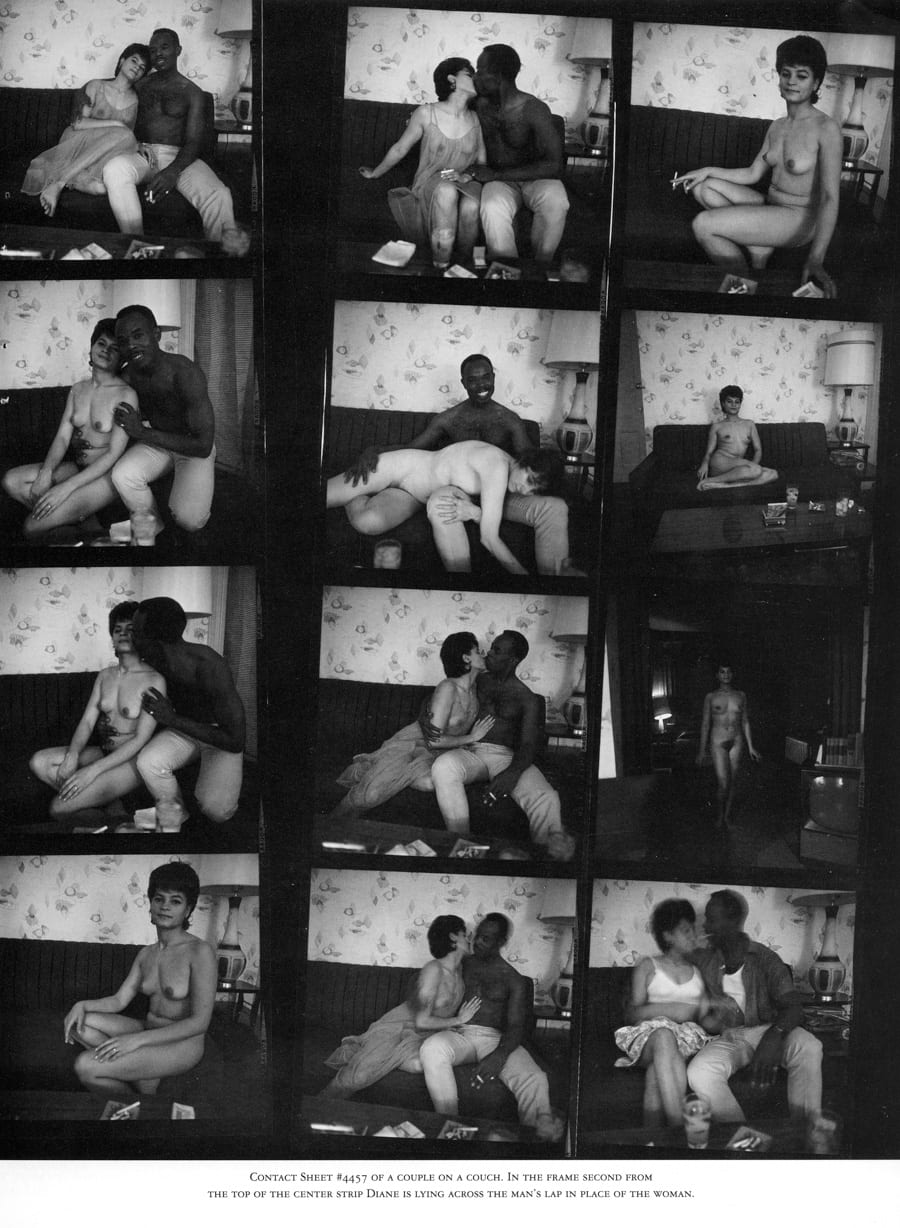“Arbus reveals the powerful ability of photography to lie, but also it is a testimony of how the lie is not mere betrayal, but a far-reaching human necessity to escape factual reality, the human urge to create and believe in stories, to draw mythical worlds and the inter-subjective life’s alternative narrative.”
Imaginary lives, compulsive projections and the wooden mirror.
The case of Diane Arbus’ contact sheet #4457.
[ 1 ] The other side of the mirror: where reality finds its meaning only through narrative.
Francesca Alinovi, the brilliant young Italian art critic (who was murdered in Bologna in 1983, stabbed 47 times by her lover), in the her part of the book “La Fotografia. Illusione o rivelazione”, [Photography, illusion or revelation, written with Claudio Marra, published by Il Mulino, 1982, and republished in 2006 by Quinlan], refers to a strange phenomenon that Disdéri, the famous French entrepreneur-photographer, also known to be the father of the carte-de-visite, was observing with awe and incredulity: his customers who went to his studio to have their photos taken were not always looking for a realistic portrait of themselves, they very often requested to be portrayed as historical heroes or mythological characters. Strange, isn’t it?
Photography, the mechanical, newborn artistic tool, the proud heir of the rising middle class, served, immediately after its first steps dedicated to recording nature, the purpose of presenting to a broad audience the physiognomy of the rising bourgeois class and revealing a wide visual range of this class identity through a spontaneous process of self-representation. The unequivocal materialism, and the pragmatism that follows, on which the bourgeoisie founded its factories and enterprises, had found in photography both a precise method of taxonomy and definition of the real world in which the industry was spreading, not to mention therefore also the publicity for bourgeoisie’s technical achievements.
Yet this child-like demand of subjects’ identification with mythological figures, then, on bourgeoisie’s part, surfaced as a desperate necessity to prove the impossible, to infect the precision of camera with fantasy and fiction. The bourgeoisie’s desired to find a condition of ontological freedom identified in fictional narrative parallel and internal to the mechanical proof offered obtained by the camera. And the carte-de-visite made by Disdéri, in fact, present a variety of characters like Mary, the Queen of Scots, the Crusaders, the Ancient Greeks or Romans.
Alinovi writes [the translation is mine], “the camera, instead of revealing their true personality, seems to excite in them, on the contrary, the impulse to hide, to be in disguise, to be de-identified. The model, instead of trying to define her/his likeness, feels the need to look like someone else. The clientele, in a few words, far from requesting a faithful and specular portrait, demands imaginary portraits,” and continues, “ Photography, created as an ideal instrument to prove identity, soon becomes an occasion to escape not only from one’s own identity, but from Reality itself.”. Disdéri is so aware of this process that in his book L’art de la photographie, had to add entire paragraphs about how to avoid the ridiculous when the photographer has to deal with clients who would ask a portrait of themselves in disguise.
From the very beginning, the camera, in order to be accepted by its audience had to remain permeable enough to let in the unreal, the fictional, the remnants of dreams and tales. This projection of desire proves then the impossibility of being content with reality only, if this is made of pure mechanical, physical principles. The shadow of the human narrative, the voices of tales and myths could not pair with this new cold perspective on representation.
“I do not how many times I came across this page, this contact sheet, but I never read the caption lines. When I finally did, I felt struck, I was hit hard.”
I open the monographic book Revelations to page 180, tilt the tome towards a friend I previously asked to make a game of attention, and ask to take a look at the contact sheet #4457, and I request to tell me what he/she sees. The answer in all the cases is the same: he/she sees a racially mixed couple photographed in what seems to be a living room. My friend may also add details like ‘sometimes the couple is split, the woman is portrayed alone.’ As it has happened before to me, no one reads the minute caption at the bottom of the page, since the situation one sees seems pretty obvious after all, not needing any further explanation. One is sure that the whole 120mm roll contact sheet contains no more than the photos of the couple. Finally I ask him/her to take a closer look at the woman and I ask if she is still the same woman in all the frames. Yes, they answer, the woman is the same. So, Diane Arbus really managed to trick us all.
[ 2 ] Diane Arbus’ contact sheet #4457: a case of substitution
I do not how many times I came across this page, this contact sheet, but I never read the caption lines. When I finally did, I felt struck, I was hit hard. I always sensed this was somehow an esoteric message directed by Diane Arbus at an attentive and intimate friend or passionate stranger who would come across this hidden trap. Play or trick, it works as a moment of true revelation.
The small fonts caption just below the reproduction says: “Contact sheet #4457 of a couple on a couch. In the frame second from the top of the center strip Diane is lying across the man’s lap in place of the woman.’ The first objective observation we can draw is that she deliberately wanted trick the viewer. In fact the frames soon after and soon before the one in which she is laying on the man’s lap, present the woman, the supposed partner of the man and we logically perceive Diane’s figure as the woman herself. Nothing prepares us to believe that the woman lying on the man’s lap is Diane Arbus, that the photographer asked to exchange parts. The photographer wanted to disguise herself, to hide, to perfectly blend in. Yes, now that we have read the caption we can detect that Diane’s body is paler than the one of the woman. We do see a little of her face and we notice her facial features, but I think no one could have seen this immediately except the ‘ideal receiver’, the intimate ‘reader’ Arbus intended to send this secret to. “A photograph is a secret about a secret. The more it tells you the less you know”, Diane Arbus wrote in 1971.
Arbus reveals the powerful ability of photography to lie, but also it is a testimony of how the lie is not mere betrayal, but a far-reaching human necessity to escape factual reality, the human urge to create and believe in stories, to draw mythical worlds and the inter-subjective life’s alternative narrative.
“In this case reality for her is epitomized by sharp, ruthless images; it holds a level of cold anguish, often enhanced by the use of the aloof strobe light or by the presence of a cruel overhead bulb casting a ruthless shadow over her subjects. “
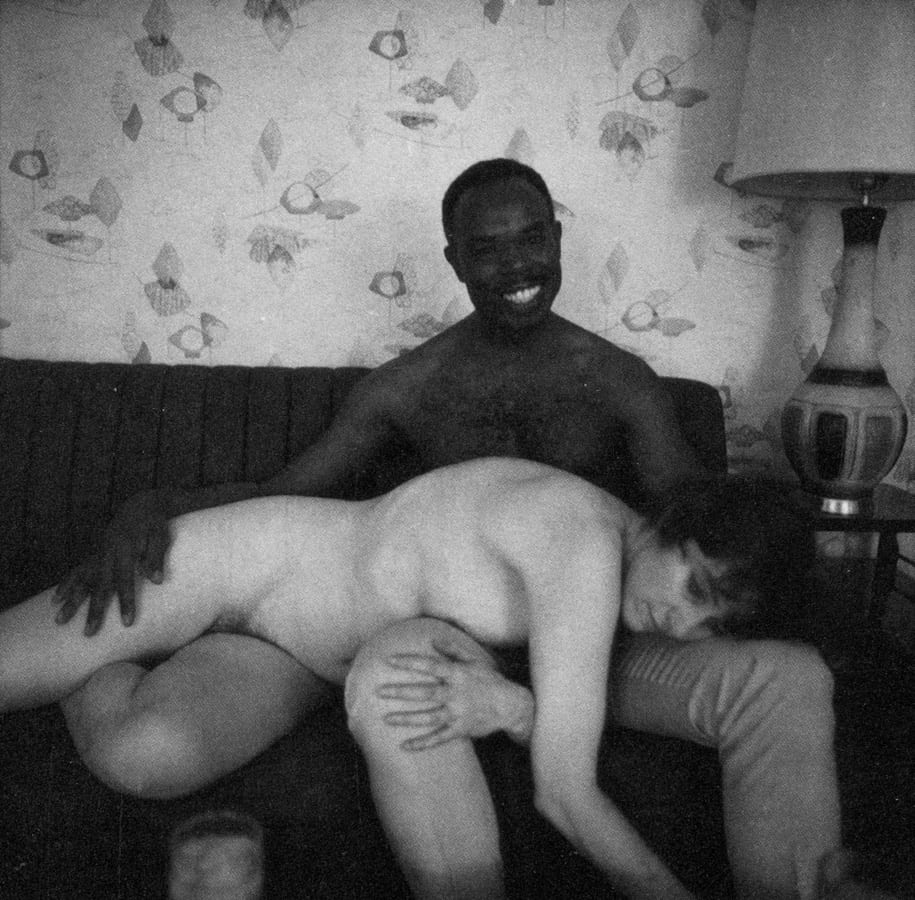
@ The Estate of Diane Arbus
[3] The chance, the others and the fragmented mes: form projection to assemblage.
Is photography a copy of reality or reality itself? Diane Arbus was always oscillating between two main concepts about mimesis in photography, and in this respect her approach to this type of dilemma is straightforward and honest. I see both different positions Arbus takes towards the nature of the photograph. The first one conceives photography as a realistic document and she uses them in collection conditions that all together can offer an overall idea of her Self by association. In this case reality for her is epitomized by sharp, ruthless images; it holds a level of cold anguish, often enhanced by the use of the aloof strobe light or by the presence of a cruel overhead bulb casting a ruthless shadow over her subjects. People look distant, alien; they are bathed in atmospheres that remind us of a psychological state of derealization. She records their presence as if to analyze the level of pain they naturally trigger to awaken. The psychological projection on these subjects (I would call them ‘objects’), revolves around the sensation of an impossible, excruciating distance that a person has to cover to reach them, a sort of feeling bordering on alienation.
On the other hand, however, in Arbus’ work there are also series of photographs of characters that are thought to be vehicles to relieve pain. Wind or eerie natural light surrounds them and the introverted joy they are sensing reflects the inner need to embrace a desire of fugue. Arbus offers them the steering wheel to drive out of the existential freezing cold box. Poetry or romantic grace irradiates from the sword eater, from the girl in costume that the wind makes her cape flap. More than psychological projection, it seems that here Arbus recalls the possibility to transmit sensorial experience naturally, when the circumstances allow the Spirit to surface. She creates ‘the other’ as a bearer of calming powers. In this case photography is not a mere realistic tool, it has become in Arbus’ hands a narrative tool that has gone through a process of attentive selection of reality until it was transformed it into a warm and effective metaphor. No matter how many realistic details we are able to focus on, these evocative photographs are a diving board to leave gravity behind and become suspended in midair, at least for the moment we look at them. Mimesis is buried under the overt urge to escape the trap of physical reality. The photograph shows its most ambiguous element: an ideal representation of reality that pushes to overcome physical matter, and vice versa. Photography here is not a mere tool to prove reality as deaf matter, rather it makes the world become a mirror on whose surface at the same time both the world and the photographer’s inner urges are reflected.
The whole world she observes is condemned to reveal also her, and not only does she knows it, but she tries to avoid it without much success. Arbus seems at this stage of her poetics to be destined to respond to the urge to collect all the dispersed fragments of her personality together. And the more she looks out there for the total sum of these fragments, the more she feels unable to reconstitute her own Self, but she is still happy to find likeness, to reflect herself into the world, to find phrases and conditions in which she can see the scattered pieces of her being glowing and calling out to be recognized.
“The end of her compulsion coincides with the revelation of her cosmic loneliness.”
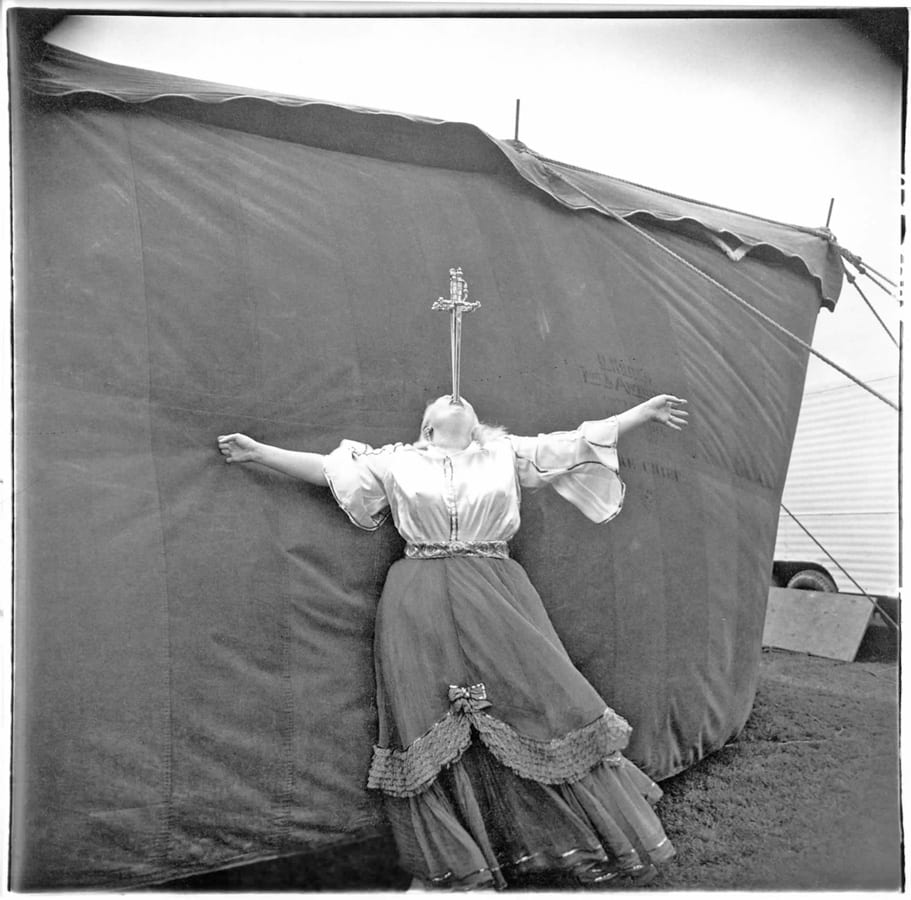
@ The Estate of Diane Arbus
[ 4 ] The wooden mirror: the end of the projective attitude. The Untitled series.
Arbus’ last work, started in 1969, and published posthumously, known as the Untitled series, dramatically throws us to a intoxicated Sabbath of characters that by birth were destined to bear the stigma of diversity. Diversity, this time, is not just race, gender or physical completion. This time she faces the true core of diversity: cognitive difference. If reality is made by beliefs and the sharing of a set of rules that make it believable and likely, then mental difference is the true discrimination between two types of human species..
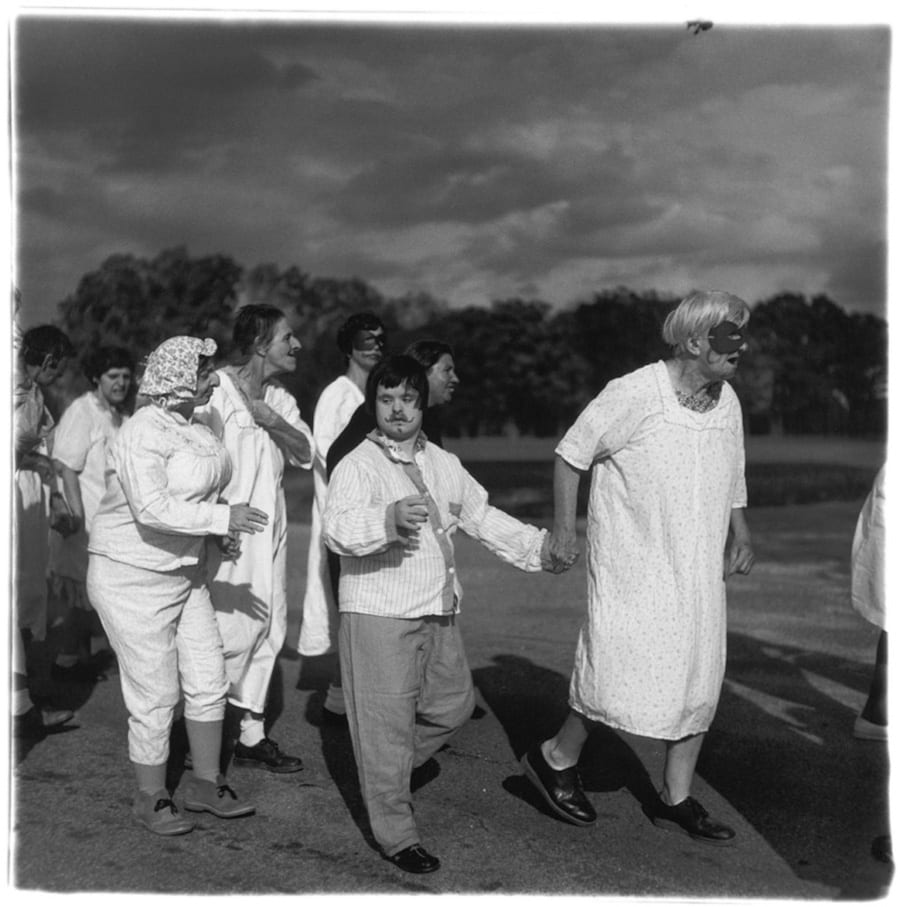
@ The Estate of Diane Arbus
The ‘retarded’ subjects Diane photographed for almost two years do not offer Diane Arbus a chance to project herself out there and to feel reassured by of her own reflection. Diane in this case is free to represent them without any possibility of identification or closeness. Like animals in the wild, the ‘retarded’, as she calls them, have a condition of diversity that cannot be either proved or visited. The physical and human distance cannot be shortened. The retarded are like an ‘impossible object’. The masked retarded characters, twice as distant form any recognition, wooden mirror in which no one can see any reflection onto it, bring the projection back to the sender, back to Arbus. If on the one hand this process frees Arbus of the feeling of being reflected everywhere out there, pasted on the world in the best tradition of the typical persecuted, on the other it reveals her a new condition of loneliness that is impossible to overcome. Diane Arbus found this path by herself, with the courage of a destructive character, and she did not want to miss the chance to see the end of her projective compulsion. The end of her compulsion coincides with the revelation of her cosmic loneliness.
Arbus passes from playing with her projective needs to the true finding of her life: reality is an alien element. The discovery is hard to swallow. Like the retarded in Untitled, she can but dance in a meaningless, disorienting world, and like a clandestine passenger on the ship of fools, she can walk towards the end unseen.
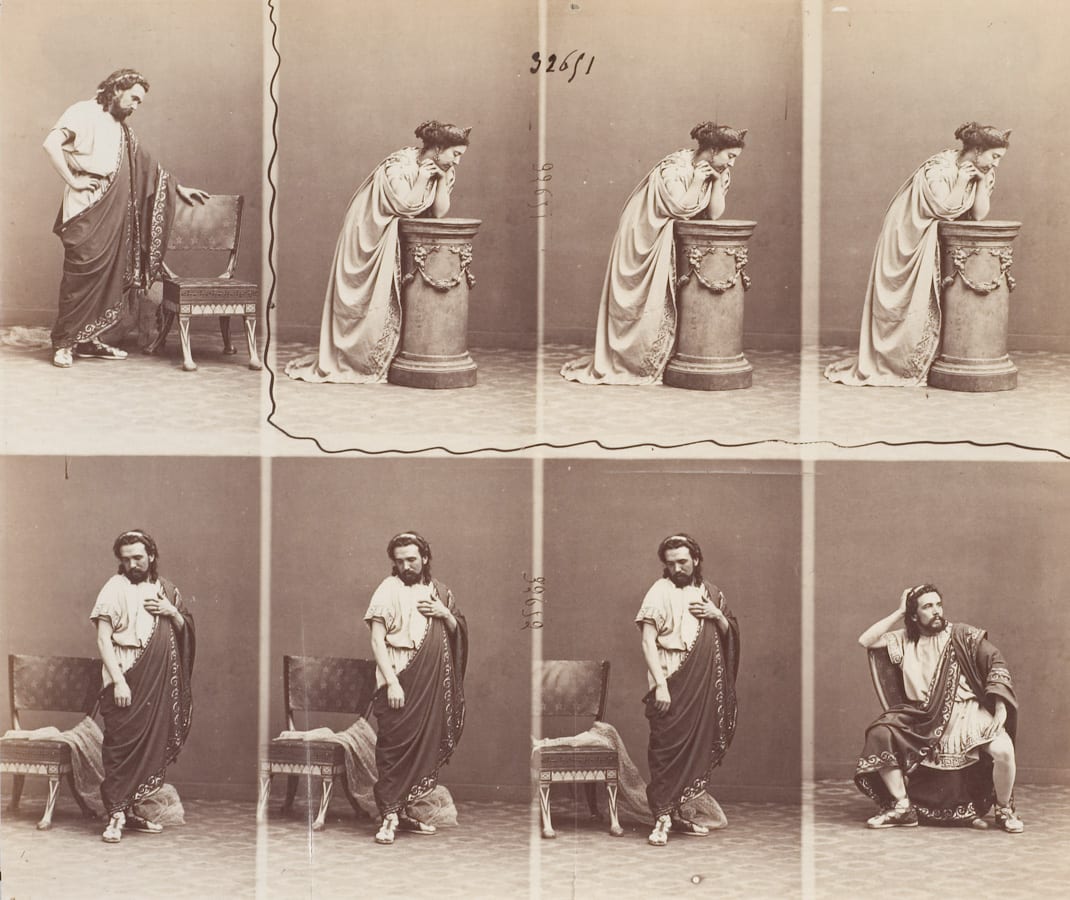
[ 5 ] Cythera: the drifting of the subjects to an unknown land. The ‘écriture du désastre’ in photography.
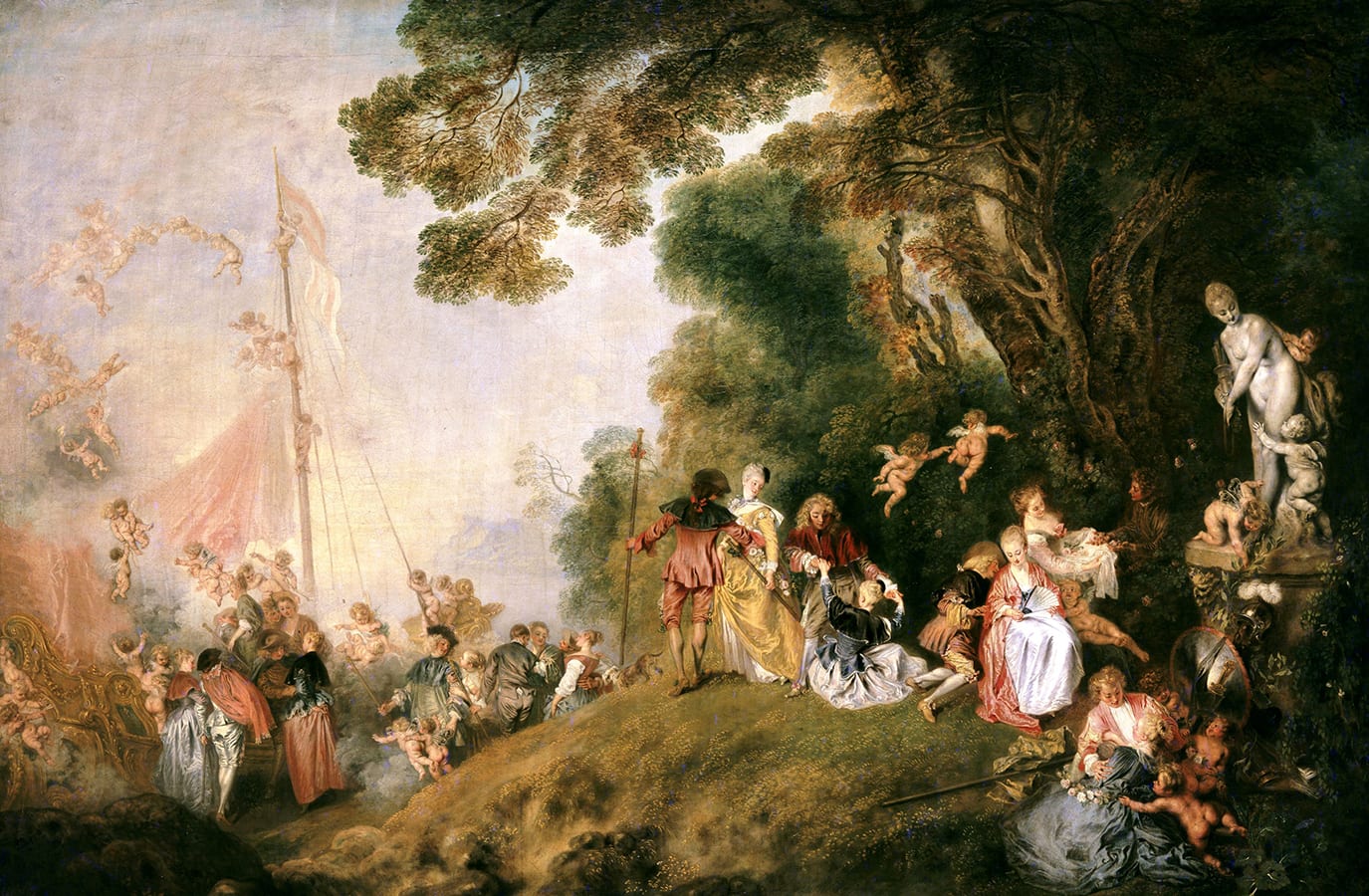
Antoine Watteau, GK I 1198, Embarquement, Stiftung Preußische Schlösser und Gärten Berlin-Brandenburg, Photo: J. P. Anders, Copyright © SPSG, Verwendung nur mit Genehmigung und Quellenangabe.
No, I did not see the cupids flying or the fact that people were divided into couples, male and female. I did not sense happiness in the painting. I always interpreted ‘The Embarkation for Cythera’ as a departure from this planet.
In the original painting by Watteau, differently from later reproductions the sails and the boats are not very visible. Where are all these people flocking to then? How can they be sure that vessels will wait for them and take them on board? What if it is not a sea the boat will float on and not a river instead, the Lethe, to cross? The mystery about the vessels that would ferry the couples is great. Skeptically I never believed in the title. To me the couples were leaving the land of certainty to sail to nothingness, to oblivion, to death, maybe, no matter how light and colorful the canvas looks.
In the Arbus’ Untitled series one photograph shows up front masked characters dressed with white robes walking, marching. The young man in fore plane is led by an older guy with a blonde wig. He seems puzzled, he is looking at something outside the frame; one hand is open as if he’s holding the hand of an invisible person. The mystery here too, as in Watteau’s painting, lies on the direction and the reason of the march (where to?), on the confused state of the young character in front, on the reason of the masquerade and the awkwardness of the event. The menacing sky, the nature’s participation to this enigmatic gathering, hovers over and reminds us of the baroque doomed universe. As in baroque times, biologic life, theological expectations, loss of directions, state of immanence ruling over a humanistic stalemate, men are suspended midair between heaven and hell, between idealistic hopes and the harshness of biological life. Cythera is not the island of love, but it not either the place where all ends. Cythera is but a far land that works as a magnetic pole whose weak attraction drags the feet of people and at times weakens leaving the flock confused and prostrated.
This midland state, where nothing is clear, where/when the enemy is not visible, where/when the our feet keep following a circular path that never ends, belongs to the nature of uncertainty, an existential state far more powerful than any condition of subjugation to rebel against. No subjective projection can be thrown since this is a condition of cosmic isolation. With the Untitled series, Diane Arbus enters a world ontologically totally different and rarely reproduced photographically: the writing of the disaster. The metaphor of the retarded patients revels its universal force, its mighty magnetism and leads Arbus’ poetic out of the individual limitation, into the Neuter. Arbus’ true face is not reflected anymore by the subjects she selected and photographed, now she has become the presenter of a world in which we all are equal and equally subjugated by the unknown. Lost on the crust of this land we wander, finally freed from our subjectivity, under the sky that does not echoes our requests.
The universal sense of uncertainty reveled by Untitled series pushes Arbus away from her descriptive self-analysis photography into the sphere of poetry whose words are uttered and stuttered because we have lost the sense of efficient, opportunistic, subjective communication. Cythera is not an island where we will land. There will be no sails waiting for us on the shore. Nonetheless we hold hands and we walk like fools forever wondering if the gods will be merciful with us, asking each other ancient questions, relying on the automatisms of biology. Cythera was swallowed by the sea in a day and no one can say when exactly this happened.
(All Rights Reserved. Text @ Massimiliano Tommaso Rezza. Images @ The Estate of Diane Arbus.)

